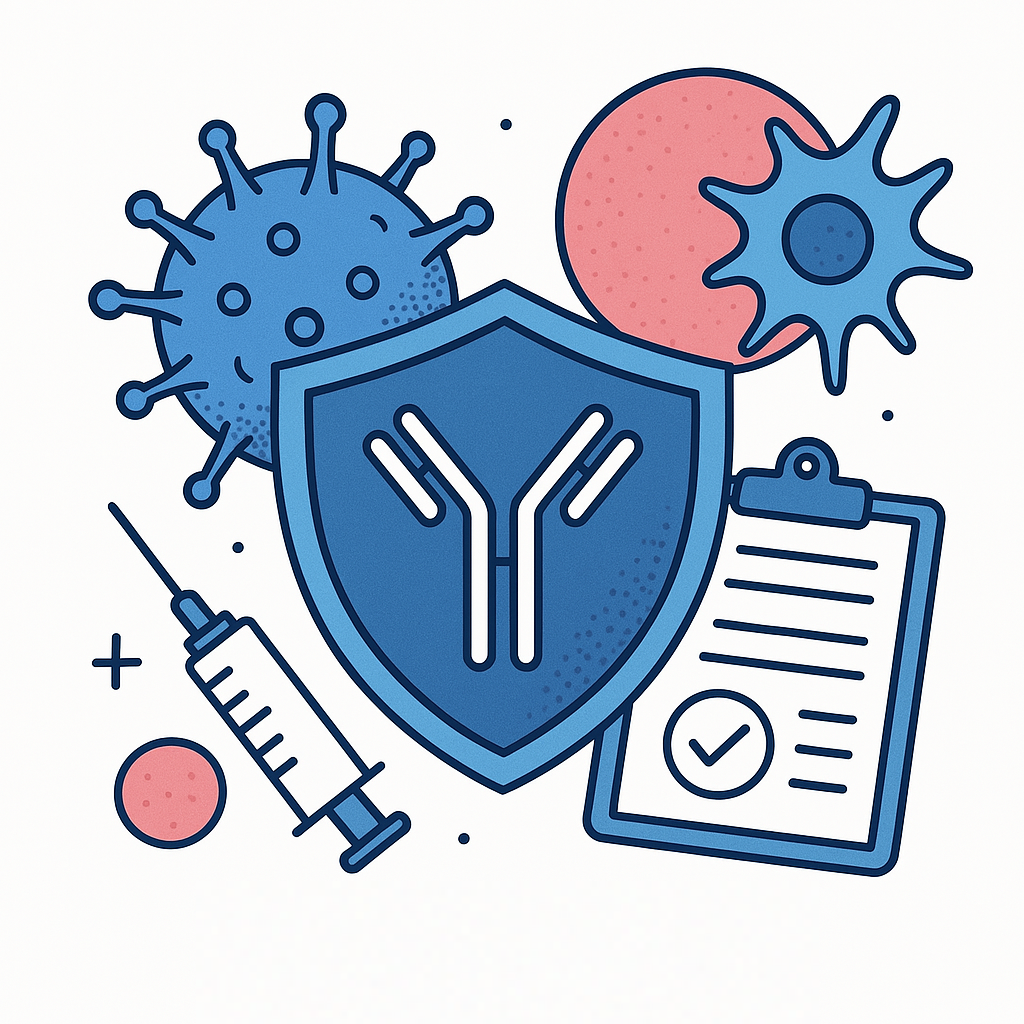Immunology Course
Explore the Body’s Defense System at the Molecular Level
Immunology is the science of how the body recognizes, responds to, and remembers threats. This course takes you deep into the mechanisms that protect us from infections, eliminate cancerous cells, and maintain internal balance—and what happens when this powerful system fails.
Crafted for medical students, this course simplifies complex pathways into intuitive, high-yield concepts, helping you understand the immune system from both a scientific and clinical lens. With clear explanations, conceptual diagrams, and real-world correlations, you’ll move beyond memorization into true comprehension.
Whether you’re prepping for USMLE, PLAB, or your university exams, these notes will help you build a rock-solid foundation in immunology and see its relevance in nearly every area of medicine.

Course Contents
1. Fundamentals of Immunity
- Overview of innate vs adaptive immunity
- Physical, chemical, and cellular barriers
- Antigens, haptens, and PAMPs
2. Cells of the Immune System
- Lymphocytes (B cells, T cells, NK cells)
- Phagocytes (macrophages, neutrophils, dendritic cells)
- Antigen-presenting cells (APCs) and their roles
- Origin, maturation, and differentiation
3. Innate Immunity
- Pattern recognition receptors (PRRs, TLRs, NLRs)
- Phagocytosis and killing mechanisms
- Complement system: classical, alternative, lectin pathways
- Inflammation: mediators, cytokines, acute vs chronic
4. Adaptive Immunity
- T cell development, MHC recognition, CD4+ vs CD8+
- B cell activation and antibody class switching
- Clonal selection, expansion, and memory formation
- Antibody structure, function, and isotypes
5. Major Histocompatibility Complex (MHC)
- MHC Class I & II structure and function
- Antigen processing and presentation
- Role in transplant compatibility and autoimmunity
6. Immune Signaling and Communication
- Cytokines and chemokines
- Co-stimulatory molecules and immune checkpoints
- JAK-STAT pathway and other intracellular cascades
7. Immunological Memory & Vaccines
- Primary vs secondary immune responses
- Principles of vaccination and herd immunity
- Types of vaccines: live, inactivated, subunit, mRNA
8. Hypersensitivity Reactions (Types I–IV)
- Immediate and delayed responses
- Mechanisms behind allergies, asthma, serum sickness, contact dermatitis
- Clinical examples and diagnostic markers
9. Autoimmunity & Immune Tolerance
- Central and peripheral tolerance mechanisms
- Autoimmune disease mechanisms (e.g. SLE, type 1 diabetes, MS)
- Autoantibodies and lab tests (e.g. ANA, RF)
10. Immunodeficiency Disorders
- Primary (e.g. SCID, DiGeorge, IgA deficiency)
- Secondary (e.g. HIV, chemotherapy, malnutrition)
- Diagnostic clues and treatment basics
11. Tumor Immunology
- Immune surveillance and escape
- Immunoediting and cancer immunotherapy
- Checkpoint inhibitors, CAR-T cells
12. Transplant Immunology
- Types of grafts and rejection mechanisms
- Graft-versus-host disease (GVHD)
- Immunosuppressive therapy basics
Recent Notes
-
Phagocytes in Human Immunology
1 Why Focus on Phagocytes? Phagocytes— these are macrophages, neutrophils, dendritic cells (DCs), monocytes and a handful of “special teams” such as eosinophils and Langerhans cells—constitute the professional ingesters of the immune repertoire. They provide (i) first-contact host defence, (ii) orchestration of downstream adaptive immunity, and (iii) cleanup and repair after inflammation. They are therefore both sentinels and governors of immune homeostasis. 2 Developmental Origins…
-
Antigens, Haptens & PAMPs/DAMPs
1 Conceptual Genesis & Terminology These four classes underlie the stranger (PAMP), danger (DAMP) and altered-self (antigen/hapten) paradigms that collectively choreograph innate–adaptive crosstalk. 2 Antigens Sub-topic Concepts Mechanistic/structural highlights 2.1 Chemical & physical determinants Size (> 5 kDa), chemical complexity (heteropolymers > homopolymers), tertiary structure, foreignness and degradability govern immunogenicity. Repetition of a single sugar on bacterial polysaccharide engages BCRs avidly but impairs…
-
Barrier Immunity at a Glance
1 Overview: Why “Barrier Immunity”? Before a pathogen confronts circulating leukocytes it must first traverse multilayered defenses that are physical (structural), chemical (molecular) and cellular (sentinel-cell) barriers. These barriers are evolutionarily ancient, encode tissue specificity and are continuously remodelled by commensal microbiota, neural inputs and systemic cytokines. Failure at any tier precipitates infection, allergy or autoinflammation. 2 Physical Barriers Level…
